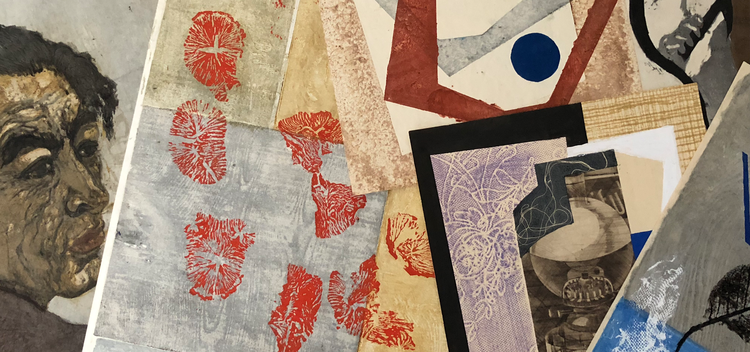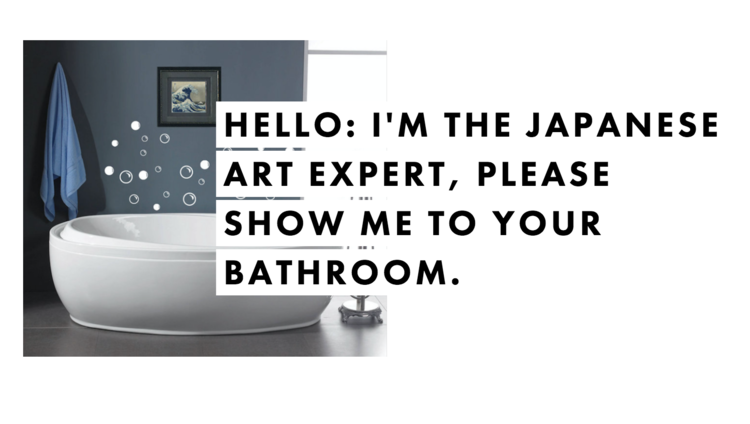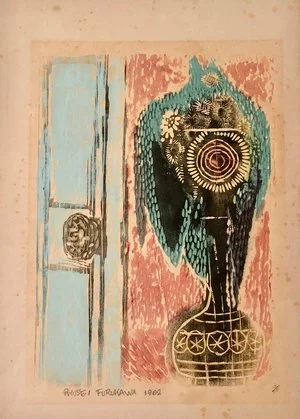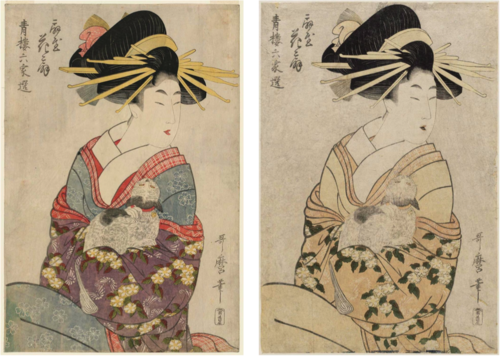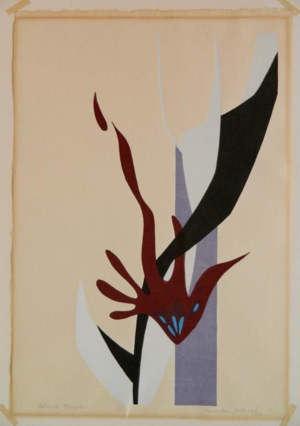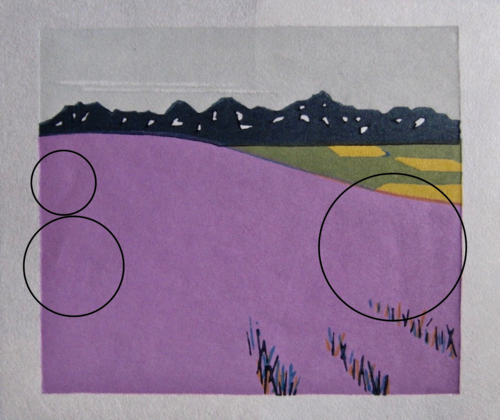PRESERVING HISTORY:
HOW TO MANAGE AND STORE YOUR JAPANESE PRINTS FOR FUTURE GENERATIONS
As owners and collectors of art we have accepted the responsibility to care for these treasures for future generations. However, have you considered if the manner in which you’ve framed and stored your prints is living up to that responsibility? After 20 years of buying and selling Japanese prints, I think I’ve seen it all and a lot of it isn’t pretty. As a buyer, I often traveled across the United States to look at collections. For some reason, more often than not, Japanese prints were framed and displayed in the bathroom. It was such a common sight that for some of us in the industry we had an inside joke about arriving at someone’s home and saying: "Hello: I'm the Japanese art expert, please show me to your bathroom", as we knew we’d run into prints there. Though some subject matter in Japanese prints such as beautiful women applying make-up might make sense in the bathroom, the room’s high humidity makes it one of the worst places for prints.
Let’s look at the common dangers that lead to damage and the relatively easy solutions to prevent such problems from occurring in the first place.
HUMIDITY & PESTS:
As I mentioned, unchecked humidity will create damage, causing various kinds of mold on prints not to mention attracting pests, such as worms or silverfish that consume paper. The mold damage can appear in various ways. The most common is brown or black spots sprinkled throughout the print or focused in specific areas. Lack of humidity can also damage prints causing the paper to dry out and become brittle. Insect damage typically appears as holes in the paper itself not to mention dead pests enshrined inside the frame. Once dead, these insects will create further damage by staining the print’s paper.
* Solution : Prints should be stored in a hospitable environment where humidity is kept between 40-60%. Never store prints in bathrooms, kitchens or over radiators where humidity extends beyond this hospitable zone. I recommend taking a closer look at your prints and their frames every season. This way you can closely monitor for pests inside the frame. I’ve also noticed exposed brick walls often attract bugs. Even if your print was framed and sealed by a professional framer those pests can still get in, so check!
Foxing (mold damage) appearing as dark spots
Voids or losses to the paper caused by insects
LIGHT DAMAGE:
Prolonged exposure to light will fade your prints. Modern or contemporary pigments are hardier than Ukiyo-e period pigments but they will loose their original intensity over time nonetheless. Further, direct sunlight will initiate a chemical reaction with the acidity found in the print’s paper (not to mention improper acidic framing materials) and will cause browning (toning) to the print.
* Solution : Without getting too technical, one should carefully consider where a valuable print is placed on a given wall as it relates to light exposure. I recommend walls that do not receive direct light from a window. Remember, light patterns change with the seasons. Make sure there is no direct sunlight in June as well as in December, as all direct sunlight is harmful regardless of the season. Harmful UV rays also come via direct light sources in your home. Many frame shops or galleries sell overhead lighting for a framed work. Leave those lights for paintings and skip it for prints. You can also add a layer protection with UV-filter art glass. However, it is important to note this art glass only prevents 99% of harmful UV rays. Even with UV glass, placing your prints in direct sunlight or under an artificial light source will create damage. So just don’t!
Original colors before sun exposure
Colors after years of sun exposure
ACIDITY:
The most common damage I come across to Japanese prints is toning (yellowing or browning to the paper) caused by non-archival materials containing acidity that damaged prints over long periods of contact. Toning is a chemical reaction between the acidity of the print and the acidity of the material that it comes in contact with. To make matters worse, sunlight promotes this chemical reaction. If left unchecked, such an improper environment can make the paper brittle resulting in cracks and even losses to the paper.
A surprise to many collectors is that original print folders, such as the ones that accompanied early Hasui, Jacoulet, or Shinsui prints, are acidic and have been known to cause damage to prints over time. If you own prints and store them in their original folders, it’s crucial to test these folders to ensure their pH levels are appropriate for storage. Pens that test pH levels of paper are available at most art supply stores and can help you make this determination.
As a matter of course, the vast majority of frame shops in the US now use archival materials but this is a relatively recent development in the industry. If you buy a Japanese print that is already framed, make sure you have it looked at by a professional framer to ensure the proper materials were used.
* Solution: The vast majority of Japanese prints were printed on hosho, handmade Japanese style paper from mulberry trees. As an organic product, these papers have a natural occurring acidity. The environment in which these prints are stored interact with this natural occurring acidity. If prints are stored in a pH neutral environment, away from direct light, you will ensure they last in their original condition for generations to come. The use of proper archival framing materials or storing prints in pH neutral paper folders are the best means for preservation.
Mat burn caused by acidity in matting material and sun exposure
IMPROPER HANDLING:
We see the results of improper handling of prints with dirty or un-attentive hands all the time in the market place. Soiling, staining, rubbing, wrinkling, creasing or folds are all results of improper handling. Larger prints such as works by Nakayama, Hoshi, or Mori often have “handling creases” or dimples caused by holding prints in an awkward fashion where the size and weight of the paper buckles around the area that is being held.
* Solution: Though museum curators and attendants use cotton gloves, I recommend freshly washed and dried hands and a healthy dose of respect as the main tools. Gloves can drastically reduce sensitivity in the hands that can result in accidentally creasing or dimpling the paper. Using bare clean hands and a clean acid free folder as a supportive temporary backing to maneuver the print on a flat surface works best.
Dimples seen in paper are caused by fingers pressing into the paper
Ideal long term storage in archival museum boxes
FRAMING AND IDEAL STORAGE:
I’ve discussed how proper framing materials are essential to the preservation of your prints; however, the point should be made that in order to preserve your prints without incurring any damage the best practice is to keep your prints in archival paper folders and store them in archival museum boxes. Of course storing your prints in this fashion is not for everyone and many collectors feel strongly that their enjoyment of their collection is tied to seeing and living with their artwork. We understand, and I personally do both. If you do frame your prints—ask questions. Make sure framers use archival materials. If hinges or tape are used, ensure they are acid free and used sparingly. Lastly, once you frame your print, add the date the print was framed on the reverse and replace the museum UV glass every 5 years. Doing so ensures you have the latest up-to-date technology protecting your most treasured possessions.


